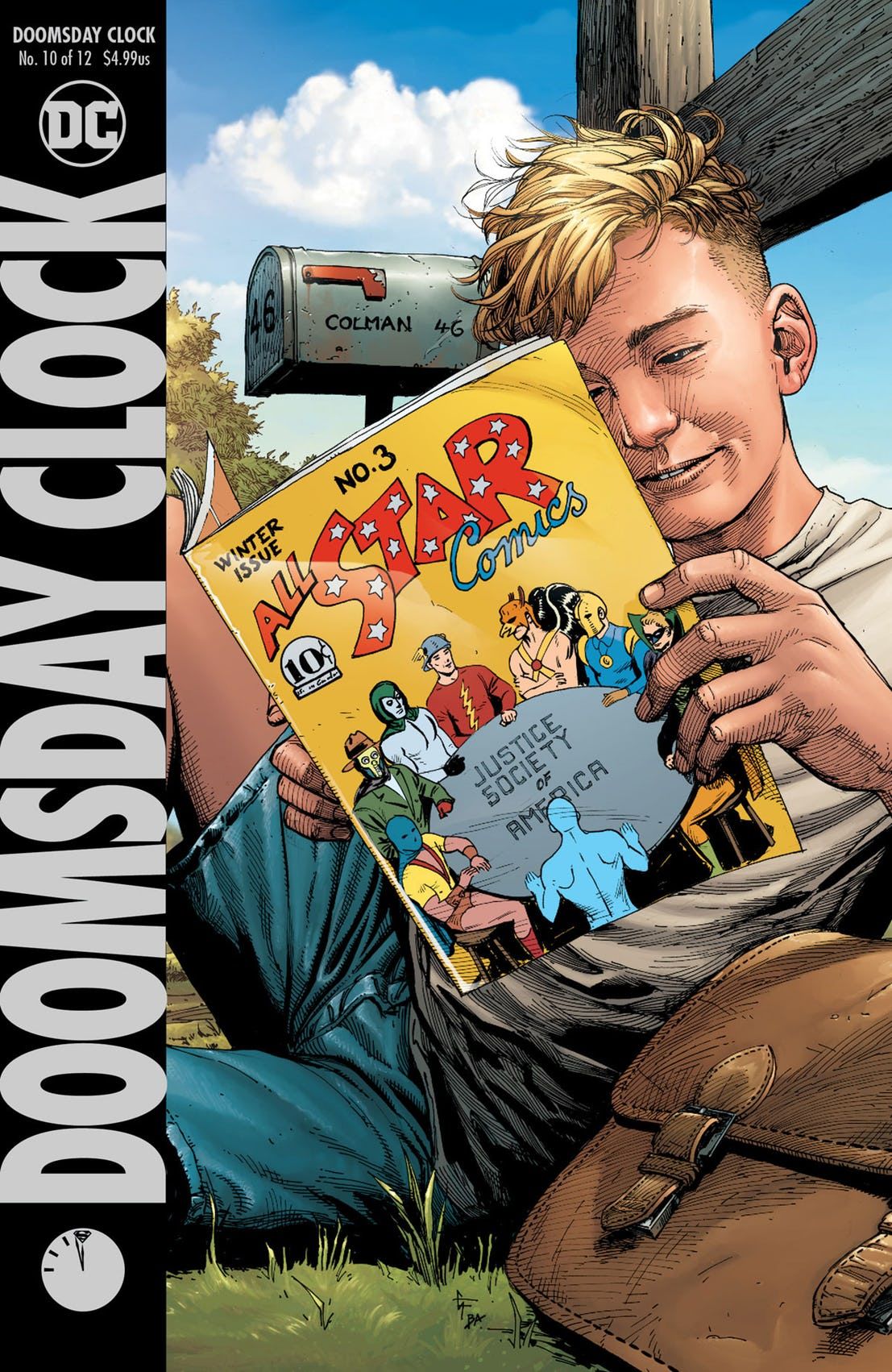REVIEW: With Doomsday Clock #10,
- WRITER
- Geoff Johns
- Artist
- Gary Frank
- Letterer
- Rob Leigh
- Publisher
- DC Comics
- Colorist
- Brad Anderson
The initial mystery when DC Rebirth began over three years ago was how exactly did Doctor Manhattan and the Watchmen Universe play into the creation of the New 52 and the gradual return of pre-Flashpoint continuity. With Geoff Johns and Gary Frank's Doomsday Clock, the answers to those questions began to take shape, and the latest issue provides the biggest revelations for the story yet.
Picking up from the events of the last issue, after the combined heroes of the DC Universe attempted to take out Doctor Manhattan on Mars, the omnipotent Watchmen character reflects on how his arrival in the DCU happened in the wake of the events of Alan Moore and Dave Gibbons' seminal story. Upon his arrival, the being, who is relatively unaffected by both space and time, addresses the ever-changing nature of the DC Multiverse and reveals his own motives in relation to his role with the reality-altering events of the New 52 and DC Rebirth.
Taking cues from Watchmen itself, Johns scripts his story with the precision and calculated pacing of a clock. This particular issue uses a conversation with an actor as a framing device across decades as Doctor Manhattan ponders the nature of the DCU and Superman's place in defining it. Coming off the action-packed previous issue, the decision to spend much of this issue on flashbacks establishing Manhattan's entry into the DCU and greater motives can be a bit jarring, though it will almost assuredly read better in a collected edition as a necessary and final calm before the storm as the story prepares to enter its climax.
Where this issue really excels is when it leans more into DC continuity, especially more recent stories. The entire premise of the crossover has been to see the intersection of Watchmen characters with the DCU. As strong a handle as Johns has on Manhattan and his counterparts, the promise of Doomsday Clock is best delivered when the DCU is seen from the omnipotent outsider's perspective. Also, having had an influential hand in shaping recent DCU history, including several stories with Frank, there is something especially rewarding about seeing Johns revisit his own history with the DCU and Superman. Even as the issue ventures into meta-textual commentary about the nature of DC Comics' continuous state of revision, Johns revisits his own storytelling history within the publisher's library.
Frank's work here is reliably good, covering multiple eras of the DCU with colorist Brad Anderson. The art team manage to convey emotion from the perpetually stoic Doctor Manhattan across the entire issue in a story predominantly set during the backdrop of the Golden Age of Hollywood , which is when he makes his secret DCU debut. And just as when Johns revisits his own history in the DCU with the script, whenever Frank and Anderson return to sequences they had illustrated previously, it adds a fresh perspective to some of those more celebrated sequences. It's like seeing a whole new side to a long-familiar story.
Now moving into Doomsday Clock's final act, the creative team have plenty of plot threads left to explore in the maxi-series' last two issues, and will hopefully not rush to get through them. This latest issue is a necessary moment to finally answer the overarching question of where, exactly, Doctor Manhattan has been and what he's been up in the DC Universe, one of the driving questions of the story that brought the Watchmen characters to the DCU searching for him in the first place. In doing so, Johns and Frank have redefined the ever-changing nature of DCU continuity while firmly underscoring the importance of Superman within it. And with Manhattan realizing his role as the story's antagonist, this meta-textual meditation on the nature of superhero storytelling will have its long-awaited showdown between Doctor Manhattan and the Man of Steel very soon with the fate of the DCU in the balance.

